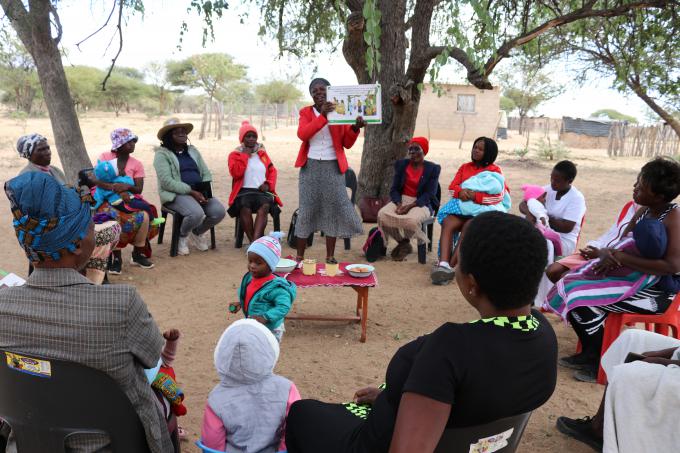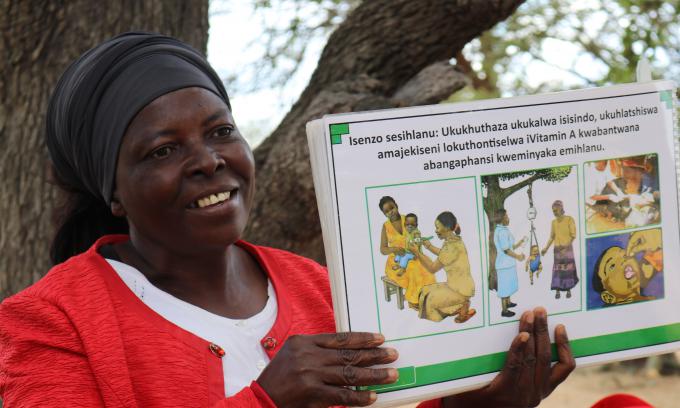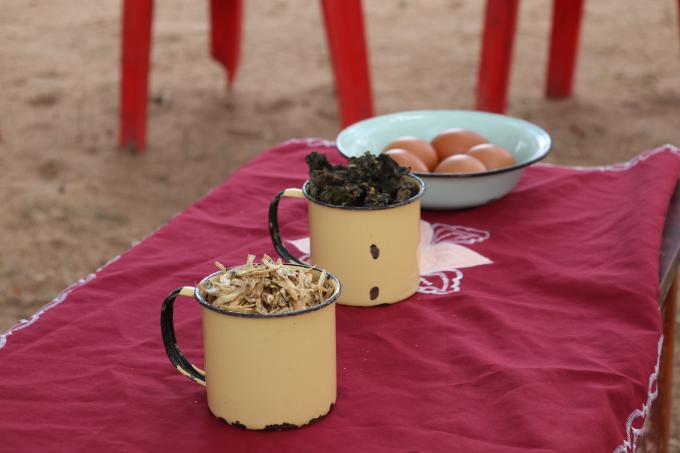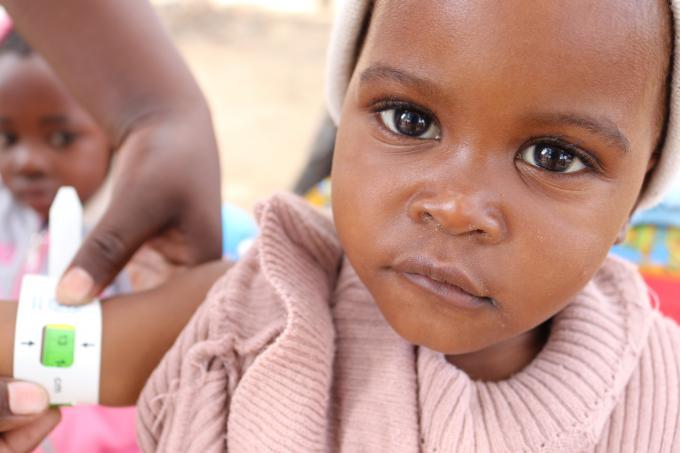Supporting Mothers to Fight Malnutrition

" I didn't know much," she reflects, "things that could have made my child sick."
Hope arrived in the form of the "Sizanani" Mother-to-Mother Care Group. Sizanani, in the local tongue, means "help each other" – a powerful message for young mothers. Supported by Save the Children's local partner, Organisation of Rural Association for Progress (ORAP), through funding from USAID’s Bureau for Humanitarian Assistance, the group brings together eight caregivers, with a common goal: raising healthy children.
Twice a month, the group gathers under a sprawling tree, a safe space for sharing experiences and learning vital motherhood skills. From best feeding practices to hygiene, breastfeeding and preparing healthy meals, these sessions have built confidence in mothers like Siyabonga.
Holding her daughter close, Siyabonga's eyes shine with newfound confidence. "The way I cared for my child before joining this group was completely different," she smiles. "Now, I know that I am supposed to feed my child meals with all nutrients at least four times a day."
Winani Ndlovu, the group's lead mother, and a trained Community Health Worker echoes the success. "The mothers are committed to improving the health of their children. Malnutrition cases have reduced in my area."
Through these regular meetings and discussions, mothers like Siyabonga have learnt important lessons on preparing healthy meals for their children using locally available ingredients. "It doesn't have to be expensive," she explains. "Last week, we learnt how to make nutritious porridge using mealie-meal and mopane worms’ powder, a locally available source of protein essential for a child's growth."
A Simple Tool to Detect Malnutrition
Beyond sharing best child feeding practices, the group equips mothers with tools to monitor their children's health. Using Mid-Upper Arm Circumference (MUAC) tapes, mothers can screen their own children for malnutrition.
Siyabonga explains how the tool works. "The tape shows green, yellow, and red. Green means healthy, while yellow or red indicates malnutrition and should be urgently referred to the hospital" She proudly says, "My daughter's tape always shows green!"
Sister’s Keeper
The impact of the Mother-to-Mother Care Group extends beyond improved health and nutrition for children. It has built sisterhood, a sense of belonging for young mothers who might otherwise feel alone.
Winani observes a heart-warming change. "Earlier, it was difficult to bring young mothers together, but they now see the value of these meetings. They support each other, remind each other about the meeting dates and they also share learnings if one of them misses the meeting."
The Integrated Nutrition, Water, Sanitation and Hygiene (WASH) and Protection project implemented by Save the Children and ORAP has supported the resuscitation of 207 such groups across Bulilima and Mangwe districts. By equipping mothers with the essential knowledge and support, these groups are building a healthier future, one child at a time.
Note: Siyabonga’s name has been changed to protect her identity
 Zimbabwe
Zimbabwe 

